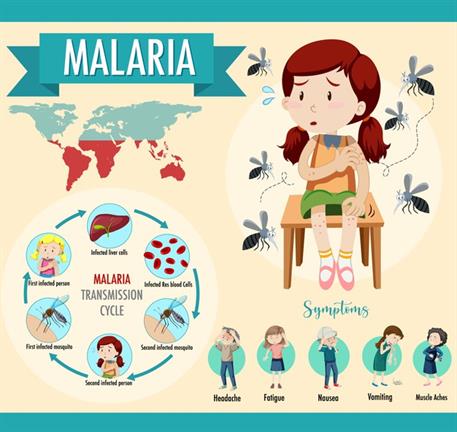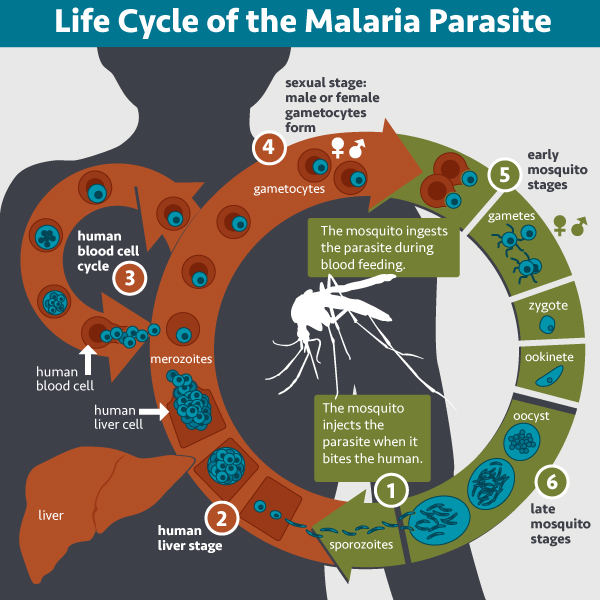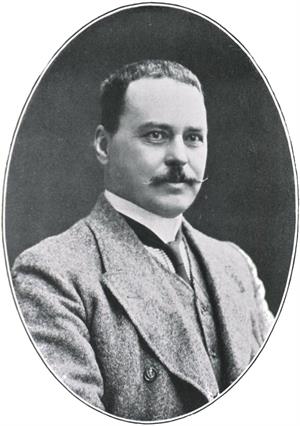
PUMPA - SMART LEARNING
எங்கள் ஆசிரியர்களுடன் 1-ஆன்-1 ஆலோசனை நேரத்தைப் பெறுங்கள். டாப்பர் ஆவதற்கு நாங்கள் பயிற்சி அளிப்போம்
Book Free DemoMalaria is a disease that has been affecting humans for thousands of years. Hippocrates, Father of Medicine, explained the disease in his medical text (4th or 5th Century BC). There was a rumour that even great warrior Alexander might have died of malarial infection. Italian physician Francisco Torti first coined the term malaria in 1718. Malaria is one of the major vector-borne diseases in developing countries. Each year approximately 300 million people are infected with malaria around the world. It may be a fatal disease to human beings, but a cure is available.
Causative organism of Malaria:
Protozoan parasite Plasmodium causes Malaria. There are four different species of Plasmodium, namely,
- P.vivax
- P.malariae
- P.falciparum
- P.ovale
Note: Malaria caused by Plasmodium falciparumis malignant and fatal.
Plasmodium falciparum is a unicellular protozoic parasite of humans and the deadliestPlasmodium species that cause malaria in humans. The parasite causes the disease's most dangerous form, falciparum malaria. Falciparum malaria is associated with more parasites in the blood and has the highest death rate and complications of all malaria types.

Malarial transmission cycle and symptoms
How it spreads:
The malarial parasite spreads through the bite of the female Anopheles mosquito, which feeds on human blood. All Plasmodium species can survive in stored blood, even if frozen, and retain their viability for at least one week, possibly well overtendays. When a mosquito carrying the malarial parasite bites a person, it enters into the person's bloodstream. It is then carried to the liver, where the parasite multiplies. Then it will be transmitted to the next mosquito from the infected person through its blood meal, and the cycle continues.
Initial symptoms of malaria:
- Headache
- Nausea
- Muscular pain
- Chillness and shivering
After the initial symptoms, there will be a rapid rise in body temperature. The fever subsides with profuse sweating.
Treatment:
The use of Quinine drugs kills the stages of the malaria parasite.
Steps involved in the life cycle of a malarial parasite:

Life cycle of the malaria parasite
Infected female Anopheles mosquito bites a person. \(\huge{\downarrow}\) Thus, injecting Plasmodium parasites into the bloodstream in the form of sporozoites. \(\huge{\downarrow}\) The sporozoites infect the human liver cells. \(\huge{\downarrow}\) Schizonts will form by the multiplication of Sporozoites inside the liver cells for the next 7 to 10 days. No infection symptoms were detected in the body during this time. \(\huge{\downarrow}\) Sporozoites in liver cells, will develop into merozoites and rupture of schizonts releasing Merozoites. \(\huge{\downarrow}\) Merozoites enter the bloodstream, which is the blood stage of the malarial parasite. \(\huge{\downarrow}\) Merozoites invade red blood cells. \(\huge{\downarrow}\) Multiplication of merozoites happen in red blood cells (erythrocytes) by Schizogony ( an asexual reproduction process) forming Schizont. These Merozoites undergoes a growing stage called Trophozoite, and the Schizont develops into a mature Schizont. \(\huge{\downarrow}\) These mature schizonts burst, and more merozoites are released into the bloodstream. \(\huge{\downarrow}\) The merozoites invade more red blood cells, causing fever. \(\huge{\downarrow}\) In some of the infected red blood cells, merozoites undergoes the process of Gametogony and develop into sexual forms (male and female) called gametocytes. \(\huge{\downarrow}\) Mosquito ingests gametocytes through its blood meal from the infected person. \(\huge{\downarrow}\) Gametocytes mate within the midgut of mosquito forming Ookinete. \(\huge{\downarrow}\) Ookinete penetrates the epithelial lining of the mosquitostomach wall and develops into Oocyst. \(\huge{\downarrow}\) Thousands of sporozoites develop within Oocyst. \(\huge{\downarrow}\) Then, mature Oocyst bursts and releases sporozoites into the body cavity of the mosquito. \(\huge{\downarrow}\) These Sporozoites travel to the mosquito's salivary glands. \(\huge{\downarrow}\) When the infected mosquito bites a healthy person, sporozoites enter the person's bloodstream from the mosquito's salivary gland, and the cycle continues. |
Important!
Schizogony: Schizogony means a replicative process by which sporozoites undergoes multiple rounds of nuclear division without cytoplasmic division.
Schizonts: Sporozoites infect liver cells, undergo schizogony and mature into merozoites inside schizonts. Normally a single schizont contains \(10\) to \(12\) merozoites.
Trophozoite: A growing stage in the life cycle of malarial merozoites when absorbing nutrients from the host.
Merozoites: From the liver cell, the sporozoites are released into the blood in the form of Merozoites. These are blood invading forms of malarial parasites.
Sir Ronald Ross:

Photograph of Sir Ronald Ross
Sir Ronald Ross was an Indian born British doctor famous for his work concerning malaria. He worked in the Indian Medical Service for 25 years. He identified the developing stages of malarial parasites in the gastrointestinal tract of mosquitoes and proved that malaria was transmitted by mosquitoes. Sir Ronald Ross was awarded the Nobel Prize for Physiology or Medicine to work on malaria transmission in 1902.
Reference:
https://commons.wikimedia.org/wiki/File:Life_Cycle_of_the_Malaria_Parasite_(20771605491).jpg
https://en.wikipedia.org/wiki/Ronald_Ross#/media/File:Ronald_Ross.jpg